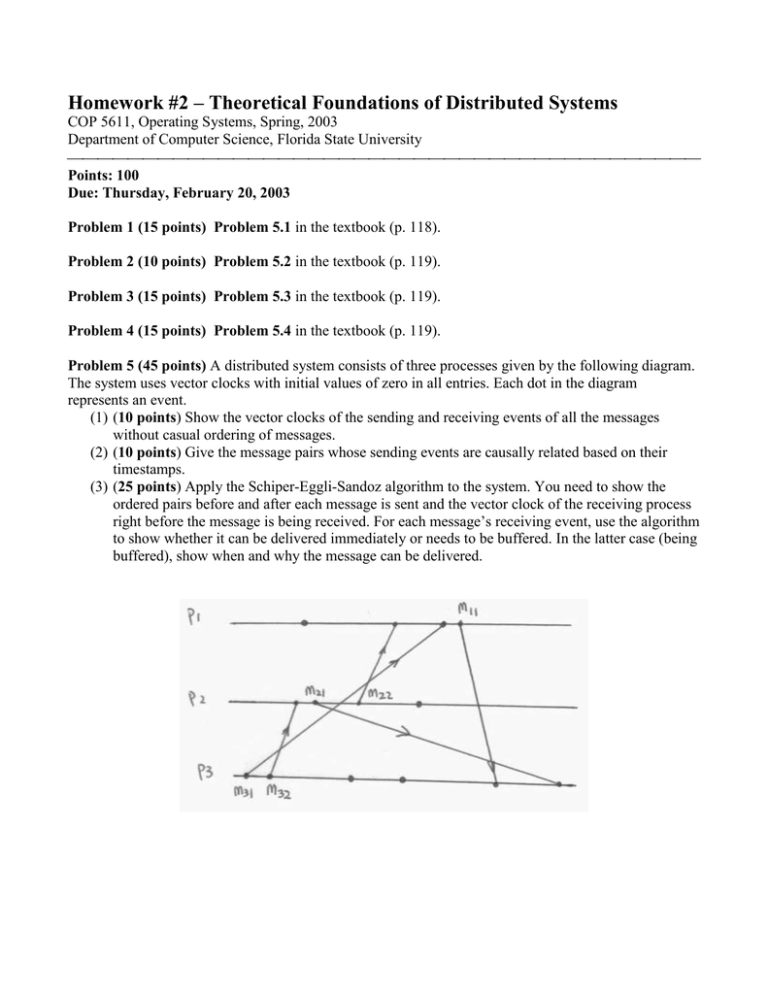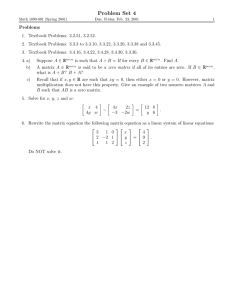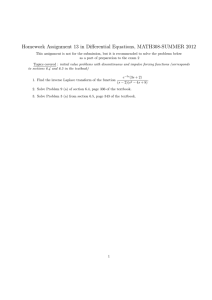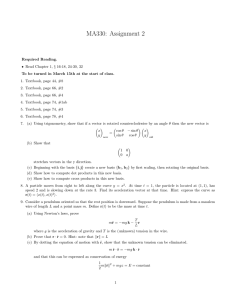Homework #2 – Theoretical Foundations of Distributed Systems
advertisement

Homework #2 – Theoretical Foundations of Distributed Systems COP 5611, Operating Systems, Spring, 2003 Department of Computer Science, Florida State University Points: 100 Due: Thursday, February 20, 2003 Problem 1 (15 points) Problem 5.1 in the textbook (p. 118). Problem 2 (10 points) Problem 5.2 in the textbook (p. 119). Problem 3 (15 points) Problem 5.3 in the textbook (p. 119). Problem 4 (15 points) Problem 5.4 in the textbook (p. 119). Problem 5 (45 points) A distributed system consists of three processes given by the following diagram. The system uses vector clocks with initial values of zero in all entries. Each dot in the diagram represents an event. (1) (10 points) Show the vector clocks of the sending and receiving events of all the messages without casual ordering of messages. (2) (10 points) Give the message pairs whose sending events are causally related based on their timestamps. (3) (25 points) Apply the Schiper-Eggli-Sandoz algorithm to the system. You need to show the ordered pairs before and after each message is sent and the vector clock of the receiving process right before the message is being received. For each message’s receiving event, use the algorithm to show whether it can be delivered immediately or needs to be buffered. In the latter case (being buffered), show when and why the message can be delivered.



